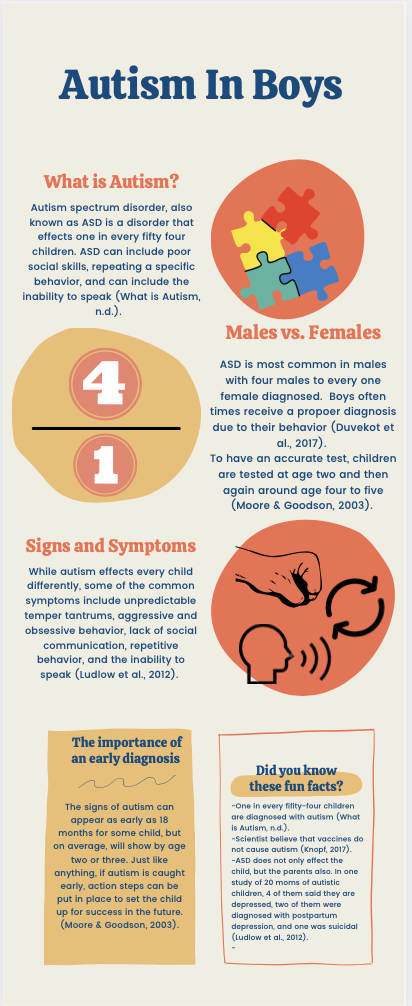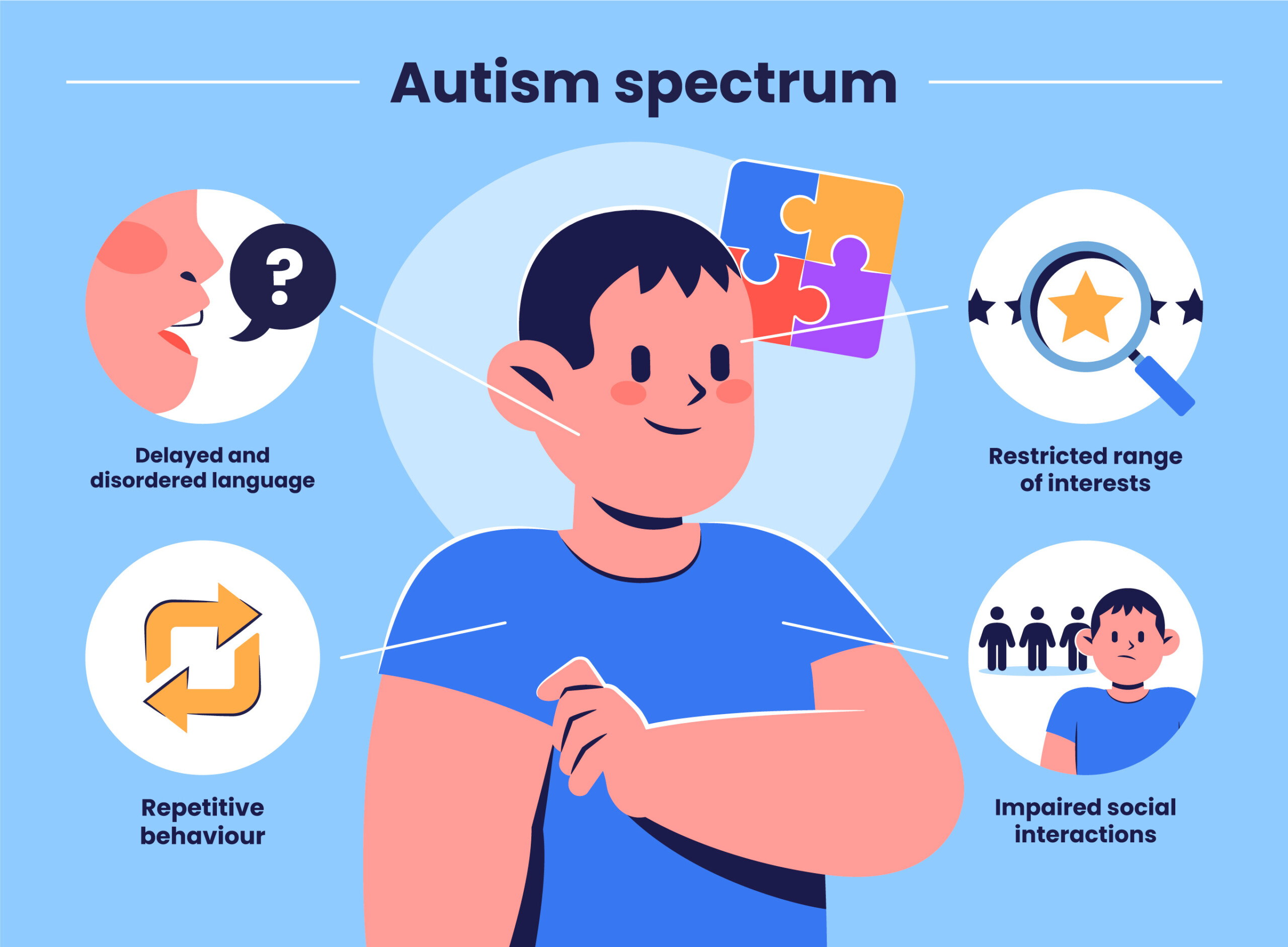How an Aba Therapist Near Me, you’ll see big changes in social and communication growth
How an Aba Therapist Near Me, you’ll see big changes in social and communication growth
Blog Article
Understanding the Influence of Behavioral Autism on Life and Social Communications
You may not recognize how deeply behavioral autism influences day-to-day life and social interactions. People on the range frequently browse a world loaded with interaction obstacles and sensory overload. These obstacles can cause stress and seclusion, impacting their relationships and general well-being. Recognizing these nuances is crucial for cultivating helpful environments. What approaches can we implement to produce more purposeful connections and inclusive rooms? The responses may stun you.
Specifying Behavioral Autism and Its Qualities
Behavior autism, typically described as autism spectrum condition (ASD), incorporates a variety of problems characterized by challenges in social interaction, interaction, and repeated actions. You might notice that people with ASD frequently have a hard time to interpret social hints, which can cause misconceptions in discussions. They may find it difficult to establish eye contact or take part in small talk, making social circumstances really feel overwhelming.
Interaction difficulties can show up in different means, from delayed speech advancement to a choice for utilizing less words. Recurring behaviors, such as hand-flapping or shaking, can work as coping devices to handle stress or sensory overload. These features can profoundly influence day-to-day life, making it vital for you to comprehend and sustain those with ASD. By recognizing these characteristics, you can foster an atmosphere that promotes approval and motivates efficient interaction, helping individuals with autism flourish in their everyday interactions.
The Spectrum of Autism: Comprehending Variability in Habits
Autism range problem (ASD) isn't a one-size-fits-all diagnosis; it differs commonly among individuals. You might discover that some people with ASD display mild signs, while others may deal with a lot more significant difficulties. This irregularity can materialize in behaviors, interests, and sensory level of sensitivities. You may run into individuals that are extremely verbal and involve quickly in discussions, while others could favor solitary activities or connect non-verbally.
In addition, the way individuals with ASD react to sensory input can differ substantially; some may be overwhelmed by loud noises or intense lights, whereas others thrive in promoting settings. The spectrum additionally consists of distinctions in social interactions; some people might have a hard time to interpret social signs, while others navigate social settings with family member convenience. Comprehending this irregularity is crucial, as it helps you value everyone's one-of-a-kind experience and dressmaker assistance to their specific needs, cultivating a more comprehensive environment for everybody.
Interaction Difficulties Encountered by Individuals With Autism
When you connect with individuals on the autism spectrum, you might observe their one-of-a-kind interaction difficulties. They frequently encounter troubles with both verbal and nonverbal hints, which can affect their social communications. Recognizing these obstacles is necessary for fostering far better connections and assistance.

Verbal Communication Troubles
Several people on the autism range experience verbal communication problems that can substantially affect their everyday communications. You may locate it testing to share your ideas, sensations, or needs plainly. This can result in stress for both you and those around you, as misconceptions take place. You might have problem with initiating conversations, maintaining a subject, or understanding subtleties in speech. Often, you might prefer using simple language or repeated phrases, which can limit your capacity to take part in deeper discussions. Your volume, tone, or rate may not line up with social expectations, triggering others to misunderstand your purposes. Recognizing these difficulties can help you and your assistance network establish approaches to improve interaction and promote far better links with others in your day-to-day life.
Nonverbal Communication Barriers
Spoken interaction isn't the only challenge individuals on the autism spectrum face; nonverbal communication barriers can be just as significant. These difficulties can lead to misconceptions or false impressions of social cues, making interactions really feel overwhelming or complex. By resolving nonverbal communication, you can locate approaches to improve your social experiences and enhance your overall high quality of life.
Social Interaction Effects
Social interactions can commonly feel frustrating due to the special interaction obstacles dealt with by people with autism. Identifying these difficulties can help you discover techniques to improve interaction, such as practicing social abilities in risk-free settings or utilizing aesthetic aids. Comprehending your demands permits you to navigate social interactions with better self-confidence and ease.
Social Communication and Connection Building in Autism
While building connections can be testing for individuals with autism, recognizing their distinct point of views and communication designs can cultivate meaningful connections. You could notice that numerous individuals on the spectrum like direct communication and might have problem with social cues or tiny talk. By being uncomplicated in your interactions, you can help create an environment where they really feel comfy.
Involving in shared passions can also serve as a bridge to much deeper links. Whether it's a leisure activity, a favored program, or a shared passion, these typical threads can open doors to relationship.
Life Routine: Navigating Challenges and Approaches
Navigating day-to-day live routines can be specifically challenging for people with autism, particularly when unanticipated adjustments happen. You could locate convenience in having a structured timetable, as it assists you expect what's following. When disturbances occur, it's typical to feel overloaded or nervous. To navigate these challenges, consider implementing aesthetic routines or checklists. These tools can supply clearness and confidence.
Developing a routine that includes sensory breaks can additionally be valuable. You can prepare short breaks throughout your day to reenergize. It's important to communicate with those around you, allowing them understand your demands and choices. This helps create an understanding atmosphere.
Last but not least, technique mindfulness methods to handle anxiety and anxiety. Easy breathing exercises or grounding methods can make a significant difference. By including these approaches, you can boost your daily routine and lessen disruptions, making life really feel extra workable.
Strengths and Capacities of People on the Autism Range
Understanding day-to-day live routines is simply one aspect of the autism experience. Numerous individuals on the autism spectrum possess exceptional staminas and capabilities that set them apart. You could find that your attention to information is exceptional, enabling you to master jobs that need accuracy and focus. Your ability to assume outside the box can lead to innovative options in different situations.
Additionally, your memory skills often beam, particularly in locations of interest. Autism Therapist. This knack for retaining information can make you a valuable source in areas like art, modern technology, or scientific research. You may additionally exhibit strong visual reasoning, enabling you to visualize complex concepts and address issues artistically
Additionally, your unique viewpoint on the world can cultivate empathy and understanding in others, enhancing social interactions. Welcoming these strengths not just improves your confidence but additionally assists others appreciate the diverse skills you bring to the table.
Creating Comprehensive Atmospheres for People With Autism
Developing inclusive environments for people with autism begins with creating sensory-friendly spaces that deal with their one-of-a-kind needs. You can also promote possibilities for social interaction, assisting to construct relationships and connections. By making these changes, you'll contribute to an extra inviting atmosphere for everybody.
Creating Sensory-Friendly Spaces
While developing sensory-friendly rooms, it's important to review the distinct needs of individuals with autism. Beginning by choosing relaxing shades and soft lighting to develop a comforting environment. When bewildered, include silent areas where individuals can reenergize and pull back. You'll wish to decrease loud noises and disturbances, utilizing soundproof materials or white noise devices to assist preserve serenity. Think about responsive components like soft textiles or fidget-friendly objects that can provide comfort. Ascertain that spaces are versatile, enabling easy click over here rearrangement to accommodate different activities. Finally, include visual timetables or clear signs to assist individuals browse the room with confidence. By click for info thoughtfully integrating these aspects, you can produce an inviting environment that supports sensory needs and promotes general wellness.
Advertising Social Communication Opportunities
Creating sensory-friendly rooms not only addresses specific comfort yet also sets the phase for significant social communications among people with autism. Urge peer mentoring, matching individuals with autism with helpful peers that can guide them through social circumstances. By applying these techniques, you can improve social possibilities, helping individuals with autism develop relationships and strengthen their social abilities in a secure, inviting atmosphere.

Often Asked Questions
Exactly How Can Buddies Assistance Someone With Behavioral Autism?
You can support a close friend with behavior autism by being client, listening actively, and appreciating their limits. Take part in tasks they take pleasure in, interact openly, and create a comfy atmosphere where they really feel valued and understood.
What Resources Are Available for Moms And Dads of Kid With Autism?
You can check out various sources for parents of children with autism, consisting of support groups, educational web sites, and neighborhood area services. Attaching with other moms and dads can likewise provide important insights and shared experiences to aid navigate challenges.
Can Behavioral Autism Adjustment In Time?

Yes, behavioral autism can alter in time. You could see shifts in communication, social abilities, and behavior as your kid grows. Early treatment and support usually play important roles in these developing changes.
Exactly How Do Sensory Level Of Sensitivities Impact Daily Life?
Sensory sensitivities can make daily experiences frustrating. You might deal with brilliant lights or loud sounds, resulting in stress or avoidance. Discovering atmospheres that accommodate your requirements can significantly enhance your convenience and total day-to-day live.
What Are Usual Misconceptions Regarding Behavioral Autism?
You may assume behavioral autism only impacts interaction skills, yet it's more facility. Numerous assume people do not have empathy or knowledge, which isn't real. Comprehending these misunderstandings aids foster acceptance and assistance for those on the range.
Behavioral autism, frequently referred sites to as autism range condition (ASD), incorporates a variety of problems defined by difficulties in social communication, interaction, and recurring behaviors.Social interactions can commonly feel overwhelming due to the special communication obstacles encountered by people with autism.Designing sensory-friendly spaces not just addresses specific comfort however additionally establishes the phase for purposeful social interactions among people with autism. Encourage peer mentoring, pairing people with autism with encouraging peers that can lead them through social scenarios. By executing these approaches, you can enhance social possibilities, helping people with autism build friendships and reinforce their social skills in a risk-free, inviting atmosphere.
Report this page